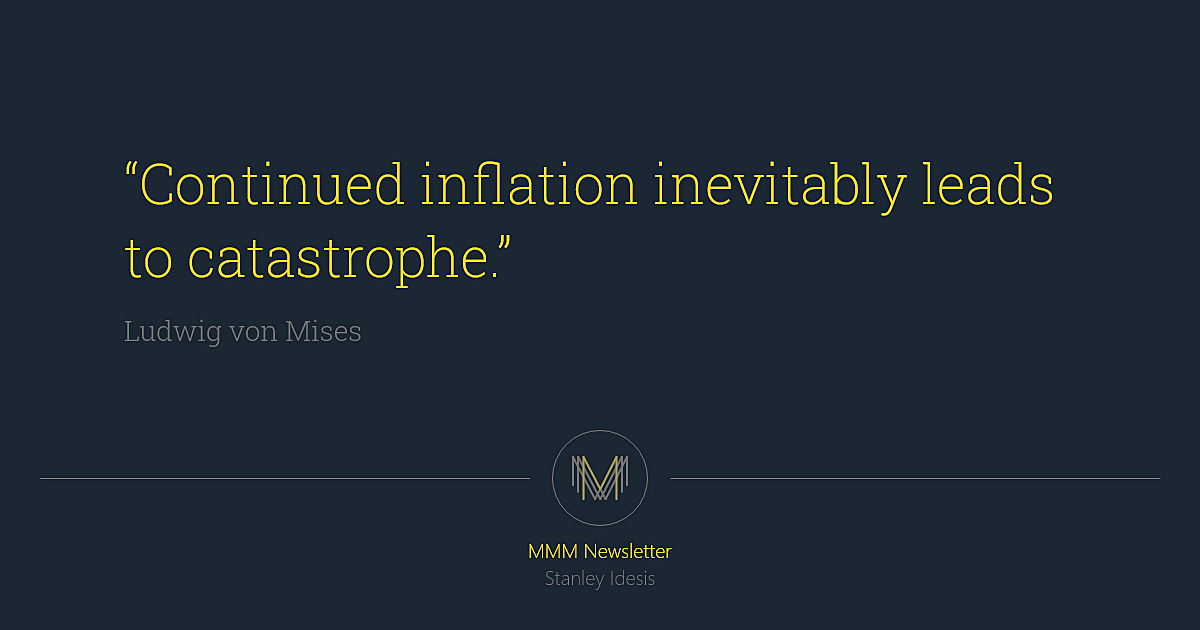In 2020, Jeff Bezos’ net worth skyrocketed to $180 Billion, making him the richest man in the universe.
Journalists derided the juxtaposition between those at the bottom rungs of the economic ladder losing their jobs and homes while Bezos became astronomically more able to help each and every one of them.
At one point, I felt in congruence with those putting such stark contrasts in relief. Today, I am less naïve. If Jeff Bezos distributed his ‘new wealth,’ everyone would ultimately lose. Including him.
It’s The Market, People
Bezos’ wealth is lodged deep inside the stock market. Yes, he gets paid handsomely for his role at Amazon as its employee-of-the-month, 324-months in a row and counting, but those sums are drops in the overflowing bucket that are his assets.
Bezos owns 11% of Amazon, which has the fourth highest market cap in the world. Today, that number reached $1.7 Trillion, which means Jeff’s cut is $187 Billion buckaroos.
We could ask Jeff to sell his shares for cash and use that money to help others. But there is something wealthy individuals realize that few others do.
Fake Dollars Be Fake
In 2020, the primary source of new wealth was found in the stock market, but where did these massive gains come from? The stock market surged in part due to speculative investors with easy money, middle-class amateurs stuffing their meme-stockings, and the Federal Reserve launching an unprecedented Quantitative Easing campaign.
Never heard of it? Here’s how Investopedia defines Quantitative Easing:
Quantitative easing (QE) is a form of unconventional monetary policy in which a central bank purchases longer-term securities from the open market in order to increase the money supply and encourage lending and investment. Buying these securities adds new money to the economy, and also serves to lower interest rates by bidding up fixed-income securities. It also expands the central bank's balance sheet.
In short, to put fresh cash into the economy, and by economy I mean corporations deemed ‘too big too fail’, the Federal Reserve buys a bunch of stocks and lousy corporate debt with printed dollars — they did this after 2008, and they’re doing it now.
But why do they do it? Like Evil Knievel, the Federal Reserve understands that when you try to jump over 65 school busses on a motorcycle, you might as well hit the gas. The damage done by overshooting pales in comparison to hitting the pavement at 200mph face-first.
As a consequence of all that gas, the stock balloon inflated and the markets appeared rosy despite the world burning around it. As a consequence, Jeff Bezos’ net worth grew exponentially. The stock market momentum combined with nationwide stay-at-home orders inspired many to double-down on Amazon, of which Bezos is a proud owner.
But did all these gains reflect increased value and productivity at Amazon? *cough.*
How Inflation Works
As Henry Hazlitt beautifully illustrates in his book, Economics In One Lesson, the expansion of the money supply benefits most the first group to receive the new money. Every later group bears a diminishing return, and the last groups to feel inflation’s bitter kiss experience a net loss of wealth.
Here's the example Hazlitt uses to draw this conclusion. Assume you have four industries A, B, C, and D. For simplicity's sake, these are the only which exist.
The Federal Reserve favors Group A, and they favor them to win by giving them a boost of cash. Overnight, Group A’s purchasing power grows by 30%. Beginning immediately, Group A can purchase more goods and services from all other groups thanks to them maintaining prices which reflected yesterday’s economic conditions. And so, Group A buys more of Group B’s stuff.
Eventually, Group B wises up and increases their prices to stem flow of supplies to Group A. In turn, Group B’s revenues grow by 20%. Group B, flush with trickle-down cash, purchases more from Group C.
Group C repeats the cycle by increasing their prices, but manages to grow revenues by a modest 10%, barely breaking even. As a consequence, Group C sees no new purchase powers.
Now Group A, B, and C sell products at prices which accurately reflect the new monetary reality, one in which Group A gained a temporary upper-hand among all groups by having a greater portion of the currency.
And then there’s Group D which sees no gain in revenue but tremendous gain in cost. The cash injection, which leaks rather than flows, is like hot water spraying out of the showerhead: it warms up your head, but cools down your feet. The people at the bottom of the river got flooded.
The net effect is a wealth vacuum that sucks wealth away from those with no access to cheap money and gives it to those with access. In the case of Quantitative Easing, too-big-to-fail corporations and the Treasury department wet their beaks first.
And by the time the vacuum reaches the average consumer, all they get is higher prices on everything they used to buy affordably: houses, stocks, groceries, and the rest. Meanwhile, their salaries increase at a pittance of 3% for year, if that, leaving them with less purchasing power than when they started.
Rich People Know This
By now, Bezos understands that the value of an Amazon share in dollars is largely inconsequential. It will only go up if he holds it.
If he chose to liquidate his asset in the name of philanthropy or giving back, he would participate in the very inflation mechanism described above.
By providing an injection of free cash to specific groups, money which came from nothing, to briefly provide them with handicapped purchasing power, he ultimately diminishes the purchasing power of those around them and every participant in the economy. Which means you.
That is what free money does and we should be modestly grateful that Jeff Bezos refused to spend it.








